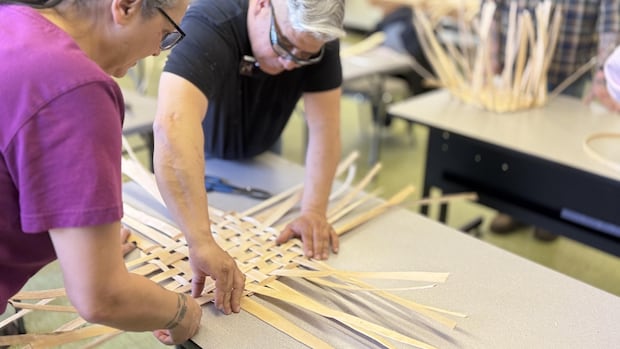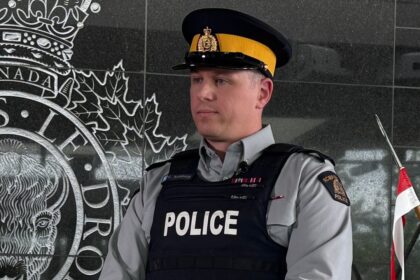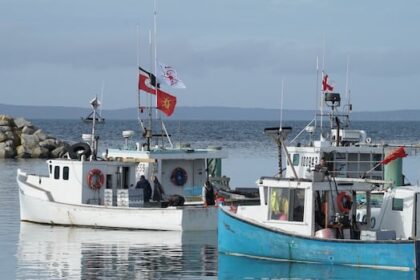New Brunswick·Ann’s EyePeople spent two days making baskets from ash wood that can be used to gather fiddleheads.Kisuhs Perley collected ash wood along the Tobique River for a basket-making workshopCBC News · Posted: Apr 13, 2025 5:00 AM EDT | Last Updated: April 13Using strips of ash that Kisuhs Perley stripped from trees he cut down himself along the Tobique River, workshop attendees learned how to weave their own baskets. (Ann Paul/CBC)This is part of a series called Ann’s Eye, featuring the work of Ann Paul, a Wolastoqey content creator. You can see more Ann’s Eye pieces by clicking here.Making baskets from wood has a deep history in Neqotkuk First Nation, according to Kisuhs Perley. Indigenous peoples have been weaving wood into baskets for centuries, but after colonization, Perley said families from Neqotkuk, also known as Tobique, used to make baskets and sell them in Maine and to Canadian farmers during potato harvests.”This is what helped our communities out in a time when farmers in Canada weren’t allowed to hire Native people,” he said. “These baskets have really been a friend to our people, in good times and bad times, and I think that’s why we’re such friends with the baskets.”Perley recently taught a two-day basket-making workshop through the Under One Sky Friendship Centre in Fredericton. Scroll through the photos and watch the video to learn more.These baskets can be used for gathering fiddleheads, since the wood they’re made from does well in the water. ‘All ash can go in the water,’ Ann Paul said. (Ann Paul/CBC)Kisuhs Perley of Neqotkuk First Nation wants to leave behind the knowledge of basket making to others. (Ann Paul/CBC)The strips of wood used to weave a basket are split from larger pieces of wood. During the basket-making process, the strips are wet down with water. (Ann Paul/CBC)WATCH | ‘I want to leave behind the knowledge of making a basket,’ says Kisuhs Perley:Ann’s Eye: Indigenous teacher wants the knowledge of basket making to be his legacyKisuhs Perley of Neqotkuk First Nation, also known as Tobique, teaches a basket-making workshop ahead of fiddlehead season.’I wish him well on his journey as a workshop teacher,’ Ann Paul said of Perley. (Ann Paul/CBC)Each part of Ann Paul’s basket has a special meaning. The vertical strips of wood, called standards, represent family members. The strips weaved in horizontally represent community members, and the circular shape of the basket is the community as a whole. What you put in the basket are the tools you learn in life, she added, and the handle is what you carry in life. (Ann Paul/CBC)Ann’s EyePhotographer Ann Paul brings an Indigenous lens to stories from First Nations communities across New Brunswick. Click here or on the image below to see more of her work.
Baskets have been ‘a really good friend to our people,’ says Indigenous workshop teacher











